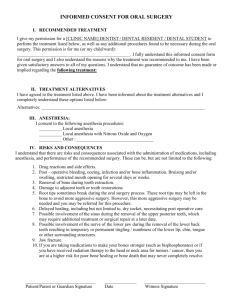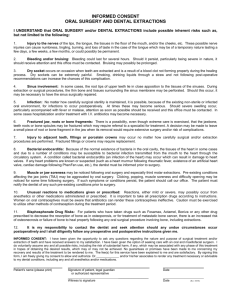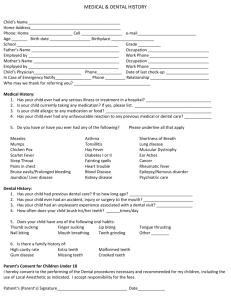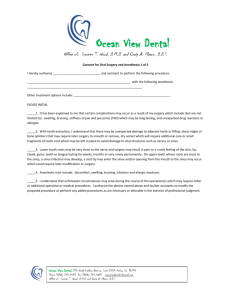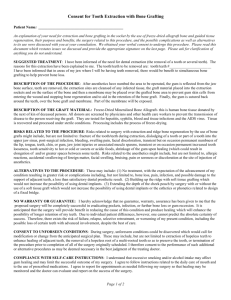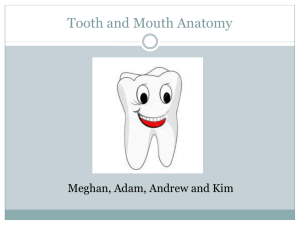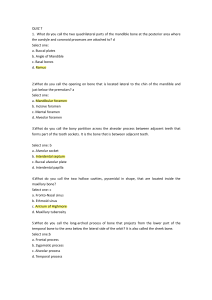dental jargon explained
advertisement
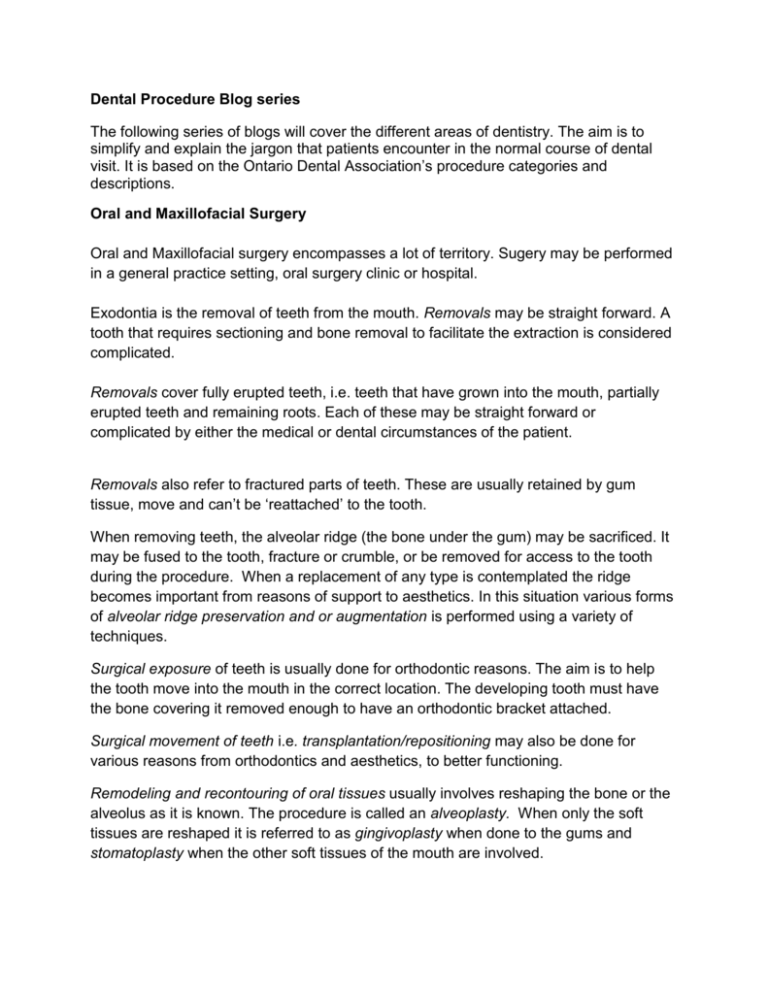
Dental Procedure Blog series The following series of blogs will cover the different areas of dentistry. The aim is to simplify and explain the jargon that patients encounter in the normal course of dental visit. It is based on the Ontario Dental Association’s procedure categories and descriptions. Oral and Maxillofacial Surgery Oral and Maxillofacial surgery encompasses a lot of territory. Sugery may be performed in a general practice setting, oral surgery clinic or hospital. Exodontia is the removal of teeth from the mouth. Removals may be straight forward. A tooth that requires sectioning and bone removal to facilitate the extraction is considered complicated. Removals cover fully erupted teeth, i.e. teeth that have grown into the mouth, partially erupted teeth and remaining roots. Each of these may be straight forward or complicated by either the medical or dental circumstances of the patient. Removals also refer to fractured parts of teeth. These are usually retained by gum tissue, move and can’t be ‘reattached’ to the tooth. When removing teeth, the alveolar ridge (the bone under the gum) may be sacrificed. It may be fused to the tooth, fracture or crumble, or be removed for access to the tooth during the procedure. When a replacement of any type is contemplated the ridge becomes important from reasons of support to aesthetics. In this situation various forms of alveolar ridge preservation and or augmentation is performed using a variety of techniques. Surgical exposure of teeth is usually done for orthodontic reasons. The aim is to help the tooth move into the mouth in the correct location. The developing tooth must have the bone covering it removed enough to have an orthodontic bracket attached. Surgical movement of teeth i.e. transplantation/repositioning may also be done for various reasons from orthodontics and aesthetics, to better functioning. Remodeling and recontouring of oral tissues usually involves reshaping the bone or the alveolus as it is known. The procedure is called an alveoplasty. When only the soft tissues are reshaped it is referred to as gingivoplasty when done to the gums and stomatoplasty when the other soft tissues of the mouth are involved. Reconstruction of the alveolar ridge may be necessary after trauma to the face and jaws. The alveolus is the foundation of the dental structures and is crucial for rehabilitative treatments. Oral surgeons are generally the specialty involved in the surgical treatment and removal of tumors in the mouth whether benign or malignant. This is referred to as Surgical excision . Other pathological entities that are excised are cycsts and granulomas . If there is a large external facial swelling present that is the result of trauma or infection, it may be surgically incised and drained to help resolve the swelling as these may be life threatening. Exploration of pathologic entities may be needed to arrive at a diagnosis and appropriate treatment. As in general surgery, sometime s the only sure way to determine what is happening is to see it firsthand. When there is trauma to the oro-facial complex and fracture parts are splinted and stabilized, the opposing jaw maybe used as the splint. As in any fractured bone the pieces are reduced, that is, brought back together before splinting. Trauma is usually accompanied by tissue cuts and tears needing laceration repairs. Hemorrhage control is also a component of trauma management and all oral surgeries. It may however be a major concern for certain patients and require more involved intervention. Oral surgeons also manage jaw joint (tempormanibular , TMJ) issues from fractures to dislocations. Facial sinus (antral ) surgery, frenectomy ( the releasing of muscle poorly located attachments) , implant placement and post surgical care all fall into the bailiwick of the oral surgeon. This survey is a brief review of the scope of oral surgery. Next blog we will address orthodontics.




